#Gur-e-Amir
Text
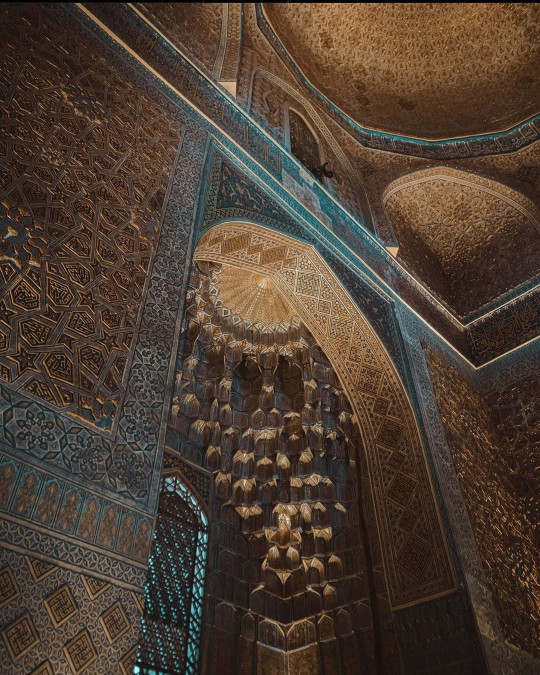

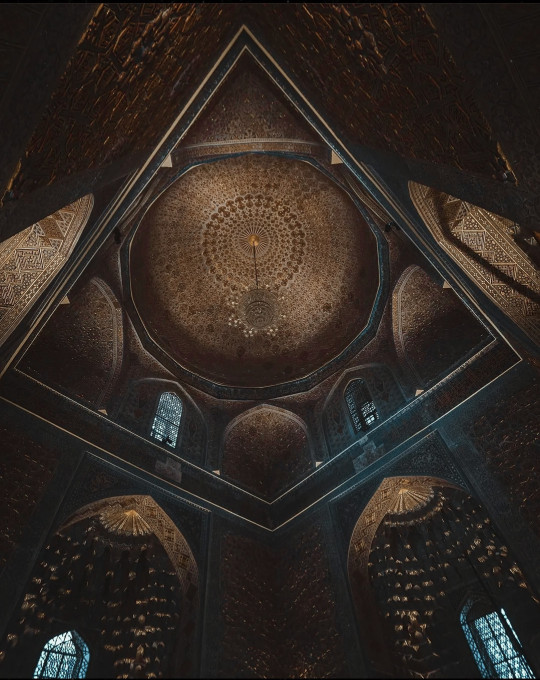

Gur-e-Amir by markepchteine.
#Gur-e-Amir#tamerlane#samarkand#uzbekistan#uzbek#alternative#aesthetic#dark academia#dark academic aesthetic#dark aesthetic#aestheitcs#dark#art#light acadamia aesthetic#light academia#tomb#amir temur#timur
2K notes
·
View notes
Text

Gur-e-Amir, the mausoleum of Timur/Tamerlane (1404, renovated in the 20th century).
Samarkand, Uzbekistan.
© Roberto Conte (2023)
#architecture#architecturephotography#architettura#architektur#timur#samarkand#samarcanda#uzbekistan
80 notes
·
View notes
Photo
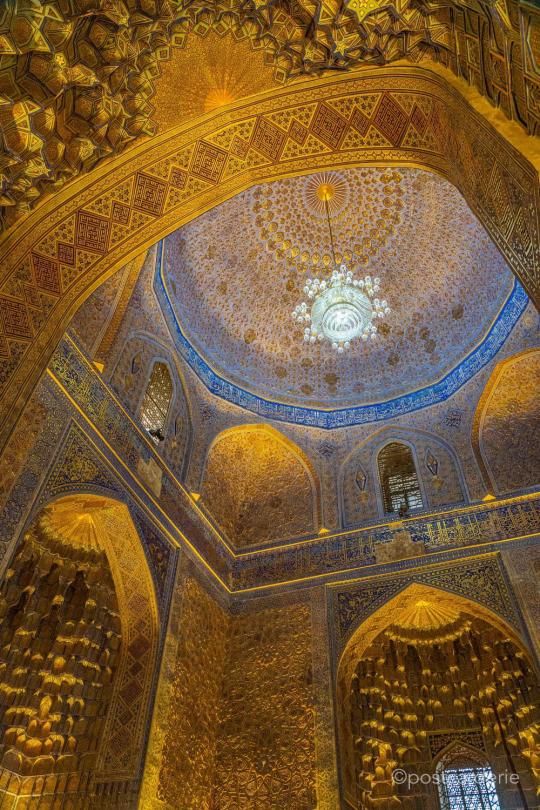
Interior of Gur-e-Amir (the tomb of Timur) in Samarkand, Uzbekistan via /r/ArchitecturePorn https://www.reddit.com/r/ArchitecturePorn/comments/ul2yp4/interior_of_gureamir_the_tomb_of_timur_in/?utm_source=ifttt
13 notes
·
View notes
Photo
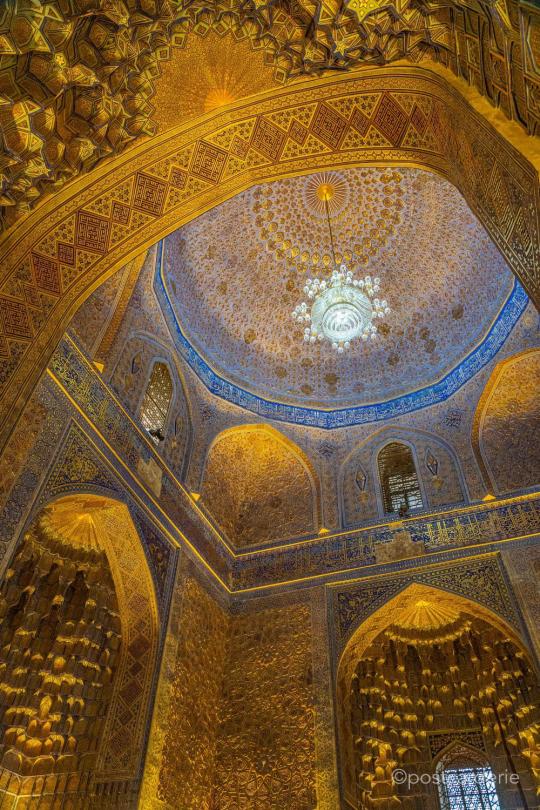
Interior of Gur-e-Amir (the tomb of Timur) in Samarkand, Uzbekistan
3 notes
·
View notes
Text
Perang Dunia II
Benarkah Perang Dunia II Terjadi Gara-Gara Kutukan Timur Lenk?
Konon, invasi Nazi terhadap Uni Soviet terjadi gara-gara para arkeolog Soviet menggali makam Timur Lenk di Samarkand.
“Hari ini, para antropolog dan ahli kimia masih mempelajari sisa-sisa jasad Timur Lenk dengan cermat di Mausoleum Gur-e-Amir. Para ilmuwan menemukan bahwa ada sisa rambut di tengkorak. Rupa sang penakluk kemungkinan…
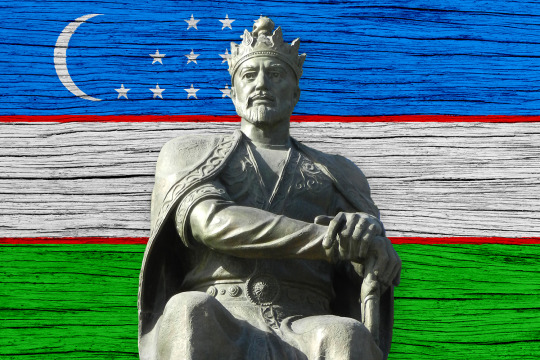
View On WordPress
0 notes
Photo

Gur-e-Amir
This is a mausoleum of the Asian conqueror Timur (also known as Tamerlane) in Samarkand, Uzbekistan. It occupies an important place in the history of Persian-Mongolian Architecture as the precursor and model for later great Mughal architecture tombs, including Gardens of Babur in Kabul, Humayun's Tomb in Delhi and the Taj Mahal in Agra, built by Timur's Persianised descendants, the ruling Mughal dynasty of North India. It has been heavily restored.
3 notes
·
View notes
Text
Photos: PM Imran Khan visits tombs of Imam Bukhari, Amir Taimoor in Samarkand
Photos: PM Imran Khan visits tombs of Imam Bukhari, Amir Taimoor in Samarkand
Prime Minister Imran Khan has shared pictures of his visit to Samarkand city of Uzbekistan and declared it as a wonderful experience.
The premier during his visit to Samarkand offered Fateha at the mausoleums of the great Islamic scholar and muhaddith Hazrat Imam Bukhari (R.A) and the ruler of Timurid Empire Amir Timur.
In his tweets today (Saturday), the premier said “It was a wonderful…

View On WordPress
#amir timur mausoleum#amir timur tomb#gur e amir mausoleum#imam bukhari grave#imam bukhari shrine#Imran khan visits amir timur tomb#Imran khan visits Imam bukhari tomb#Imran khan visits Samarkand
0 notes
Video
Samarqand, Uzbekistan
123 notes
·
View notes
Text

Gur-e Amir Mausoleum (15th century) Samarkand, Uzbekistan contains the tombs of Tamerlane, his children and grandchildren.
52 notes
·
View notes
Photo

Gur-e-Amir, a mausoleum of the Asian conqueror Timur, Uzbekistan, 1896
24 notes
·
View notes
Text
Taj Mahal
Taj Mahal
Agra, Uttar Pradesh
The Taj Mahal, pronounced [ˈt̪aːdʒ mɛˈɦɛl], is also known as the "Taj". It is a tomb of conch shells. The Taj Mahal is considered one of the seven wonders of the world. Its craftsmanship and industrial ingenuity still make it an immortal building in India.
The main example of the Mughal artisans is the Taj Mahal, a collection of Persian, Turkish and Indian artisans.
Location ---
The Taj Mahal covers an area of about 221 hectares (552 acres). Of these, only the Taj Mahal is 38 hectares and the 138 hectares is the Taj Protected Forest Area.
Manufacturer--
Its creator is the famous Mughal emperor Shah Jahan. He built it in memory of his third wife, Mumtaz. It is considered to be the epitome of Muslim art in India and is also known as a major example of world history.
Another example of his luxury is the peacock throne. The "Persian" book, which details his daily life, provides evidence of his good governance, diligence, and patriotism.
Construction history and naming ---
The word Taj Mahal is just a translation of the word Mumtaz Mahal. Husband Mumtaz is the daughter of Asaph Khan, brother of Bhuvanmohini Nurjahan. Shah Jahan was ousted in 1612. In her 19-year marriage, she gave birth to 14 daughters. She is said to have heard her cries shortly before the last child was born. It is widely believed that if the mother hears the baby's cries, her death is inevitable. He was upset and told Shah Jahan. She died on Tuesday, June 7, 1631, after giving birth to her last child, Gauhara Begum, after suffering 30 hours of labor pains. Before her death, she made two requests to her husband, Emperor Shah Jahan: First, let her four sons be enthroned at the end of the emperor, and second, a grand burial temple should be built in her burial ground. Fulfilling his last wish, Shah Jahan built such an amazing palace and named it after Karan Mumtaz. Construction of the Taj Mahal began in 1932.
It is said that after Mumtaz's death, the luxurious Shah Jahan gave up all luxuries and led a normal life. He even visited Mumtaz's grave twice a day and turned his back on his other two wives and his royal affairs. Mumtaz's unhappy grief was the inspiration behind the construction of the Taj Mahal. To build a memorial to Mumtaz, he bought a large plot of land on the right bank of the Yamuna River from Mansingh's grandson Jayasinghe. A large number of Indian and foreign artists painted the palaces. Of these, the emperor chose his favorite design, and the construction of the Taj Mahal began in 1632 under the supervision of two officials, Mukaramat Khan and Mir Abdul Karim. The construction of the main palace was completed in 1648, but the construction of the surrounding palace and garden was completed. With a lot of money, Shah Jahan succeeded in making it a wonder of the world.
Persian crafts, as well as Mughal craftsmanship, were used in the construction of the Taj Mahal. The Timurid dynasty and some other Mughal buildings such as Gur-e-Amir (the tomb of Timur, the father of the Mughal dynasty at Samarkand), the tomb of Humayun, the tomb of Itmad-ud-Daila (some call it Shishu Taj), the Shahjahan-built Delhi Jail. Although the former Mughal buildings were mostly made of red stone, the Saha Jahan in the construction of the Taj Mahal was engraved with white shells of marble. Built under his auspices, these palaces have ushered in a new level of industrial cleverness reform.
Building materials--
Twenty precious stones, including conch shells, have been used in the construction of the crown. It is said that red stone was brought here in one lakh fourteen thousand carts from Fatehpur Sikri. Subsequently, the lower Mughal kings sent a large number of stone-like crowns for subordination. The people even donated stones instead of annual taxes, becoming the emperor's favorite hymn.
Feature, beauty and attraction--
There is a huge wall of red stone around the crown. The wall is 1240 feet long in the west and 667 feet wide in the north-south. The Kalindi River flows through the country at the foot of the wall. There are four towers on the four corners of the wall, and three arches on each side. The highest pillar is the main entrance to the Taj Mahal. At the top of the arch is a magnificent pillar, with 26 gold bowls lined up in a single row. As you cross the wall and enter through the arches, you can see a garden adorned with flowers, flowers, and flowers. It doubles the interior beauty of the Taj Mahal.
In order to make the peacock throne in the Taj Mahal look exactly like a living peacock, he painted the color stone he needed. He used a number of valuable items, such as diamonds, blues, and rubies, to revitalize the Taj Mahal. The foundation of the crown, the profession, the curtain, the roof, etc. are so skillfully built that it still looks like it was built some time ago. The subtle veins of the leaves, the hair of the flowers, the very subtle parts of the story are also described with great care. The various pieces of stone are so skillfully attached that it is a wooden lesson to grasp the pairs of them.
0 notes
Text
ok wait sorry im doing my reading for today right and i learned about gur e amir
or gur-i amir
ANYWAY
its in samarkand, uzbekistan and its where timur is buried
and it looks SO COOL ok we need to be FREE because im tired of staying in america i wanna SEE IT

ALSO IM MAD bc i was reading this book and im like oh ok, i know these places, wow timur was an emperor why dont i remember learning about him
FUCKING
THE WEST-
anyway i learned about him as tamerlane, instead of timur, bc they were talking shit about his hand and leg being messed up
called him timur the lame-
0 notes
Photo



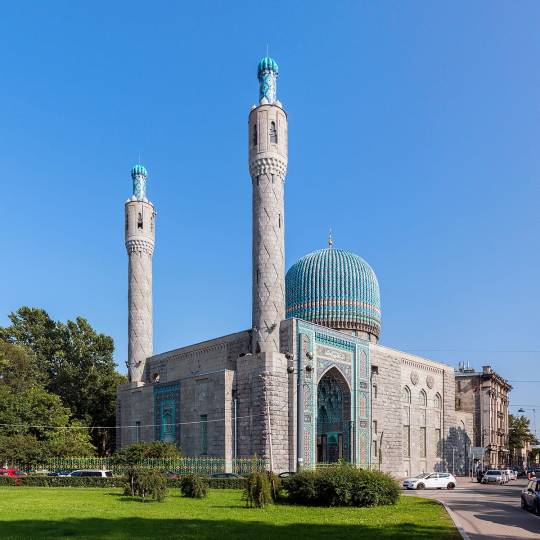



The Saint Petersburg Mosque.
Saint Petersburg Mosque was founded in 1910 in honour of the Emir of Bukhara, as a result of Central Asia joining Russia.This occurred under Tsar Alexander III, when the court was trying to respect the interests of the Muslim community in St Petersburg, in which there were more than 8,000 people.When opened in 1913, the mosque was the largest church in Russia. It can accommodate up to 5,000 worshippers. Two minarets reach 49 meters, and the dome rises 39 meters high.The location of the mosque was symbolic, sited opposite the Peter and Paul Fortress, in the city centre. The architect Nikolai Vasilyev patterned the mosque after the 15th century Samarkand building Gur-e-Amir, where Tamerlane’s ashes are kept. The dome is almost an exact copy.The permission to purchase the site was given by Emperor Nicholas II in Peterhof on 3 July 1907. That autumn, the committee approved the project. The architect was Nikolai Vasilyev, the engineer Stepan Krichinsky, and construction was overseen by academic Alexander von Hohen. The building facade was made by combining both oriental ornaments and turquoise blue mosaic.
1 note
·
View note
Text
Samarqand UZ - Gur-e-Amir Mausoleum 24 by Daniel Mennerich
#POTD - Samarqand UZ - Gur-e-Amir Mausoleum 24 by Daniel Mennerich
The Gūr-i Amīr or Guri Amir (Amir Temur maqbarasi), is a mausoleum of the Asian conqueror Timur (also known as Tamerlane) in Samarkand, Uzbekistan. It occupies an important place in the history of Persian-Mongolian Architecture as the precursor and model for later great Mughal architecture tombs, including Gardens of Babur in Kabul, Humayun’s Tomb in Delhi and the Taj Mahal in Agra, built by…

View On WordPress
0 notes
Photo

Gur-e-Amir mausoleum in Uzbekistan at night
58 notes
·
View notes
Photo

The tomb (the Gur-e Amir) of Timur/Tamerlane, Samarkand. Tamerlane, whose remains are in the black central coffin, attempted to “restore” Genghis Khan’s Mongol Empire in many areas of central Asia, even though he was not a descendant of Genghis. His empire, acquired through the killing of millions of people, began to fall apart within a century of his death in 1405.
239 notes
·
View notes